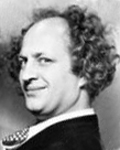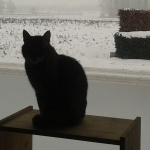-sws wrote:Also, here's the place I would consider arranging a sleep study if I were in this particular situation of apparently suffering deteriorated sleep with excessive unresolved RDI (and having shown central emergence on my BiLevel titration):
http://www.bidmc.org/CentersandDepartme ... Staff.aspx
That's Harvard medical school's teaching hospital. And the team members above that I might try to arrange my sleep study with would be any of these authors:
http://www.ncbi.nlm.nih.gov/pubmed/16217173
And while you're up there, run down the street to B&W's.
In this month's issue of JCSM, they take the position
Complex Sleep Apnea: It Isn’t Really a Disease,
Journal of Clinical Sleep Medicine, Vol. 4 (5), p. 406-408, Atul Malhotra, M.D.; Suzie Bertisch, M.D., M.P.H.; Andrew Wellman, M.D.
and note how in complex disease, specifically, central disturbance created by pressure therapy, that the relief of obstructive events followed by a period of acclimatization may change the arousal threshold and then the central events will resolve spontaneously. This process may take days to weeks.
So if this is true, then it stands to reason that the balance can be upset immediately by arbitrary dial wingin' with an inability to determine what's appropriate by using short-term observations ("let's try this today, let's try that tomorrow").
So I calls up B&W, and they say
B&W: Brigham and Women's Hospital, how can we help you?
SAG: Hi, this is SAG. Is Atul there?
B&W: One moment, please, I'll connect you.
SAG: Cool.
B&W: Department of Sleep Medicine, how can we help you?
SAG: Atul home?
B&W: One moment, please, I'll check.
SAG: Cool.
B&W: This is Dr. Malhotra, how may I help you?
SAG: Hey, Tulmeister, wazzup?
B&W: SAG you old &#@*&%!!!
SAG: Old? Who you calling "old" you $#*%^#*!!!
B&W: You, you old &#@*&%!!!
SAG: Oh yeah, well come down here, we'll do a 10K and then we'll see who's an old &#@*&% you old &#@*&%!!!!!!
B&W: OK, so what do you want besides complaining about how the Mets collapsed again?
SAG: Well, what do you think about this dial wingin' case?
B&W: The AHI on CPAP 14.0 cmH2O is 1.4.
SAG: Good point. I wish I had thought of that.
B&W: OK, I gotta split.
SAG: Right, thanks. Say hi to the family.
B&W: Back atcha.













